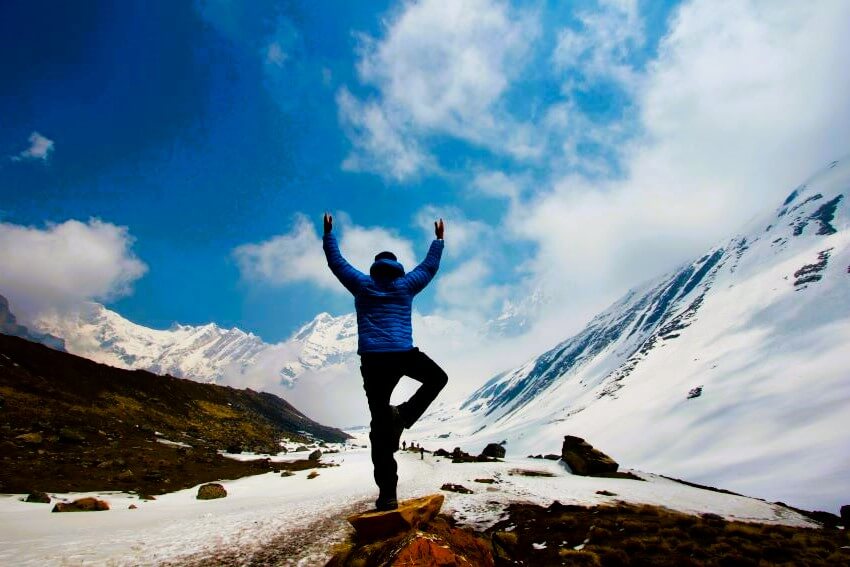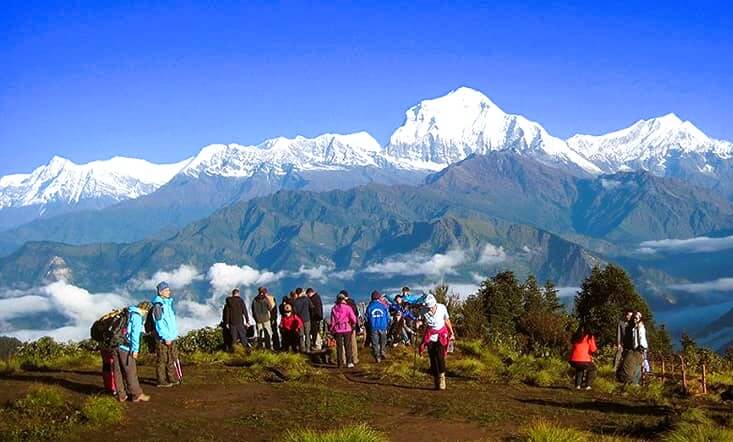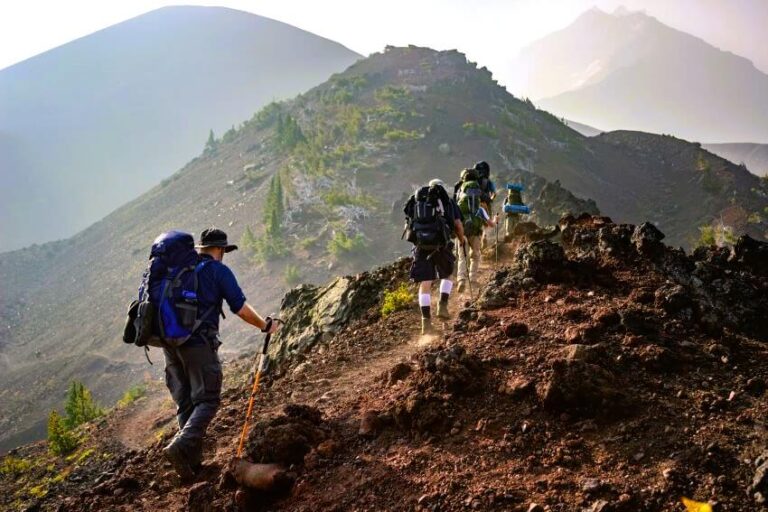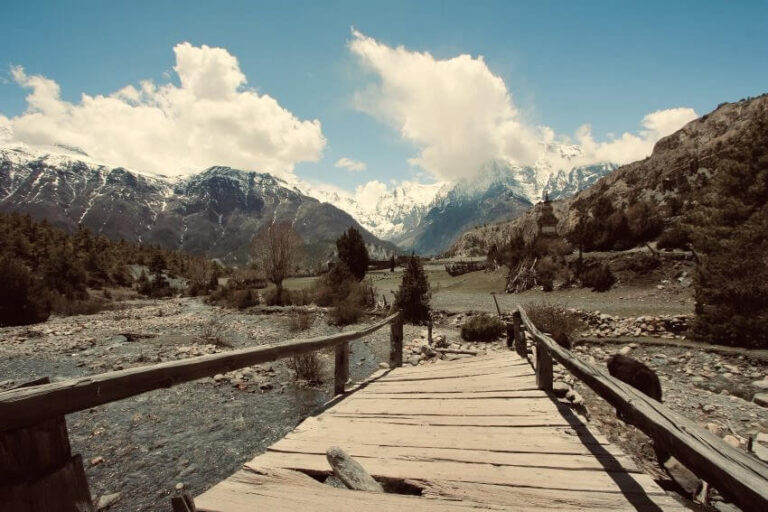The Annapurna Base Camp (ABC) trek is a jewel among Nepal’s trekking routes. It captivates visitors with unparalleled views of the majestic Annapurna and Dhaulagiri mountains. Yet, it’s no walk in the park! Preparation is key to tackling this challenging journey.
Here are the top 10 essential tips on how to prepare for Annapurna Base Camp trek. Perfect for seasoned trekkers and first-time adventurers, these insights will prepare you and significantly enhance your trekking experience, making every step worthwhile. Ready to make your trek as rewarding as the stunning vistas? Let’s dive in!
1. Pre Trek Condition
Prioritizing physical preparation before embarking on the Annapurna Base Camp trek is crucial. This groundwork is the key to ensuring a comfortable and enjoyable experience, setting the stage for a successful adventure.
Attain Mountain Fitness
Getting in shape for a trek is more than just a good idea—it’s essential! To conquer the rugged trails, you need to boost your stamina, strength, and flexibility. Activities like running, cycling, and swimming are your best allies in this quest. Imagine each lap in the pool or mile on the road as a step closer to the breathtaking peaks you’ll explore.
To really gear up for the challenge, aim to incorporate 30-45 minutes of cardio exercises into your daily routine at least five times a week. This regular practice won’t just prepare your body; it will transform your trekking experience, turning tough trails into enjoyable adventures.
Establish A Regular Training Routine
Start with a lighter load and gradually increase the weight. This methodical approach will not only build your strength and endurance but also acclimate your body to the strain of carrying gear over long distances.
Additionally, don’t overlook the power of strength training. Exercises like squats, lunges, and core workouts are vital. They fortify your muscles, ensuring they’re up to the task of tackling steep climbs and rugged terrain. By preparing your body comprehensively, you’re setting the stage for a successful and enjoyable trekking experience.
Train Bright For Downhill Sections
Hiking downhill often places more strain on your knees and legs than ascending. To ensure you’re well-prepared for this, include downhill hiking in your training routine.
Using trekking poles is also a smart addition to your downhill training. These poles not only reduce the impact on your joints but also provide added stability, making your descent safer and more controlled.
2. Mentally Prepare For The Trek
Undoubtedly, mental preparation is a cornerstone of the Annapurna trek preparation. The journey can be mentally demanding, with long days of hiking and unpredictable weather conditions. Thoroughly researching the route, reading about others’ experiences, and visualizing the journey in your mind are essential steps to prepare for the trek.
Developing a positive mindset is crucial, as it will help you embrace the trek’s challenges and rewards. Mindfulness and meditation techniques can also be beneficial for managing stress and staying focused during the trek. By mentally preparing in these ways, you can enhance your overall trekking experience.

3. Trekking Permit
To trek to Annapurna Base Camp, you’ll need two permits:
- Annapurna Conservation Area Permit (ACAP): The Annapurna Conservation Area Permit (ACAP) is a special permit that visitors need to obtain to enter and trek in the Annapurna region of Nepal. This permit is essential for maintaining the natural environment and supporting conservation efforts. It’s a gateway to the stunning beauty of the Annapurna region, a place you’ll be in awe of and want to protect for future generations to enjoy.
- Trekkers’ Information Management System (TIMS) Card: The Trekkers’ Information Management System (TIMS) Card is a mandatory permit for trekkers in Nepal. It helps authorities track trekkers and ensure their safety while on the trails. The card contains important information about the trekker, such as their name, nationality, trekking route, and emergency contact details. It’s an essential safety measure that ensures you can enjoy your trek with confidence, knowing that help is just a call away in case of emergencies.
Both permits can be obtained from the Nepal Tourism Board office in Kathmandu, Pokhara, or through registered trekking agencies. Make sure to carry these permits with you at all times during the trek.
4. Visa
Most nationalities require a visa to enter Nepal. Tourists can obtain a tourist visa on arrival at Tribhuvan International Airport in Kathmandu or at various land border crossings.
During peak seasons, such as March to June and September to December, you might encounter long visa queues. However, you can also apply for a visa in advance at a Nepalese embassy or consulate in your home country.
Check the visa requirements and fees, and ensure your passport is valid for at least six months from entry.
5. With/Without A Guide
Deciding whether to hire a guide or trek independently depends on your experience and preference:
- With a Guide: Trekking with a guide has several advantages, including local expertise, assistance with navigation, and support in emergencies. Guides can also enhance your trekking experience by providing insights into the local culture and environment.
- Without a Guide: If you’re an experienced trekker confident in your navigation skills, you can trek independently. Ensure you have a detailed map, a reliable guidebook, and a well-planned itinerary.

6. Embrace The Challenges Of Altitude Headaches
Altitude sickness, or acute mountain sickness (AMS), is a common concern when trekking to high altitudes. Symptoms include headaches, nausea, dizziness, and fatigue. To lower the risk of AMS, it’s essential to acclimatize properly.
This means ascending gradually, taking rest days to let your body adjust to the altitude, staying hydrated by drinking plenty of water, and avoiding alcohol and caffeine. If you experience severe symptoms, descend immediately and seek medical attention.
Stay Hydrated
Aim to drink at least 3-4 liters of water per day. Carry a reusable water bottle and use water purification tablets or a portable filter to ensure you have access to clean drinking water. Herbal teas and soups are also great for staying hydrated and warm.
7. Protect Yourself From High-Altitude
Acclimatization is when your body adjusts to changes in altitude. This helps prevent altitude sickness. It’s best to spend at least one day getting used to a moderate altitude before going higher.
Take breaks as you go up to give your body time to adjust. Stay within 300-500 meters in a day.
Pay attention to how you feel. If you have bad headaches, feel sick, or are dizzy, go to a lower altitude immediately. If your doctor says it’s okay, you can bring medicine like Diamox (acetazolamide) to help you adjust to the altitude.
8. Equipment, Gears, And Supplies

When preparing for a trek, having the right gear is crucial for a successful journey. Here’s a checklist of essential items to pack:
- Backpack: A comfortable, well-fitting backpack with 40–50 liter capacity.
- Footwear: Sturdy, waterproof boots with good ankle support and lightweight camping trekking shoes.
- Clothing: Moisture-wicking base layers, insulating mid-layers, waterproof and windproof outer layers, warm hats, gloves, and socks.
- Sleeping Bag: A high-quality sleeping bag rated for low temperatures.
- Trekking Poles: These are helpful for balance and reducing strain on your knees.
- First Aid Kit: Including medications for altitude sickness, pain relief, bandages, and blister treatment.
- Navigation Tools: Map, compass, and GPS device.
- Headlamp: With extra batteries.
- Water Purification: Tablets or a portable filter.
- Personal Items: Toiletries, sunscreen, sunglasses, and a camera.
Remember to check out stores in Kathmandu (Thamel and Newroad) and Pokhara (Lakeside) for essential gear you can buy or rent!
9. Food And Water
Proper nutrition and staying hydrated are essential for maintaining energy levels while trekking. Along the trek, you will often encounter tea houses that provide simple yet nutritious meals, including rice, lentils, vegetables, noodles, and soups. For quick boosts, bringing along high-energy snacks like nuts, energy bars, and dried fruits is a good idea.
Additionally, it’s essential to have access to safe drinking water, which can be accomplished by using purification tablets or a portable filter.
10. Consult With The Seasonal Trip Planner For The Trek
The weather in the Himalayas can be unpredictable, so planning your trek according to the best seasons is essential. The ideal times for the Annapurna Base Camp trek are during the pre-monsoon (spring) season from March to May and the post-monsoon (autumn) season from September to November.
The weather is relatively stable during these periods, and the views are clear. Consult with a seasonal trip planner for detailed information about the current weather conditions, trail status, and any other considerations for your trek.
What Is The Best Time To Trek To Annapurna Base Camp?

The best time to trek to Annapurna Base Camp is during the pre-monsoon (spring) and post-monsoon (autumn) seasons.
- Spring (March to May): This season is characterized by mild temperatures and blooming rhododendrons, creating a vibrant and picturesque landscape. The weather is generally clear, offering excellent visibility of the mountains.
- Autumn (September to November): Known for its stable weather, this season provides clear skies and breathtaking views of the mountains. The pleasant temperatures make it the most popular time for trekking in Nepal.
- Winter (December to February): This period could be better due to extreme cold and heavy snowfall, which can make trekking challenging and potentially hazardous.
- Monsoon (June to August): The monsoon season brings heavy rains, which result in slippery trails and a higher risk of landslides, making it less favorable for trekking.
For a safe and enjoyable trekking experience, plan your trip during the spring or autumn when the weather conditions are most favorable.
FAQs
What fitness level do you need for the Annapurna Base Camp Trek?
You don’t need to be an elite athlete, but a good fitness level is necessary. Cardiovascular endurance, strength, and flexibility are essential for handling long days of walking and varied terrain. Regular training and preparation are vital to ensuring you can handle the physical demands of the trek.
How much does it cost to hike Annapurna Base Camp?
The cost can vary depending on factors such as the duration of the trek, choice of accommodation, and whether you hire a guide. On average, the budget is between $500 and $1,500, including permits, lodging, food, and other expenses.
Is ABC Trek for beginners?
The Annapurna Base Camp trek is considered moderate in difficulty, making it accessible for beginners in good physical condition and properly prepared. However, prior trekking experience can be beneficial. Beginners should ensure adequate training and be ready for the physical and mental challenges of the trek.
Do you need a tent on the Annapurna Circuit?
You may not need a tent on the ABC trek, as numerous teahouses along the route offer accommodation. However, you can carry your tent and camping gear if you prefer camping.
What level of fitness is needed for Annapurna Circuit?
The Annapurna Circuit requires a good fitness level, similar to the ABC trek. The trek involves long days of walking, steep ascents and descents, and high altitudes. Training should focus on building cardiovascular endurance, strength, and flexibility. Prior trekking experience is beneficial but not essential with adequate preparation.
Do you need oxygen at base camp?
Generally, you do not need supplementary oxygen at Annapurna Base Camp, as it is located at 4,130 meters (13,549 feet), below the altitude where severe altitude sickness typically occurs. However, it’s essential to acclimatize correctly and monitor for symptoms of altitude sickness. In severe cases, descending to a lower altitude is the best remedy.



.webp&w=1200&q=75&dpl=dpl_Ae74KKinWptv33iVEbQBDyMpuBzQ)
.webp&w=1200&q=75&dpl=dpl_Ae74KKinWptv33iVEbQBDyMpuBzQ)